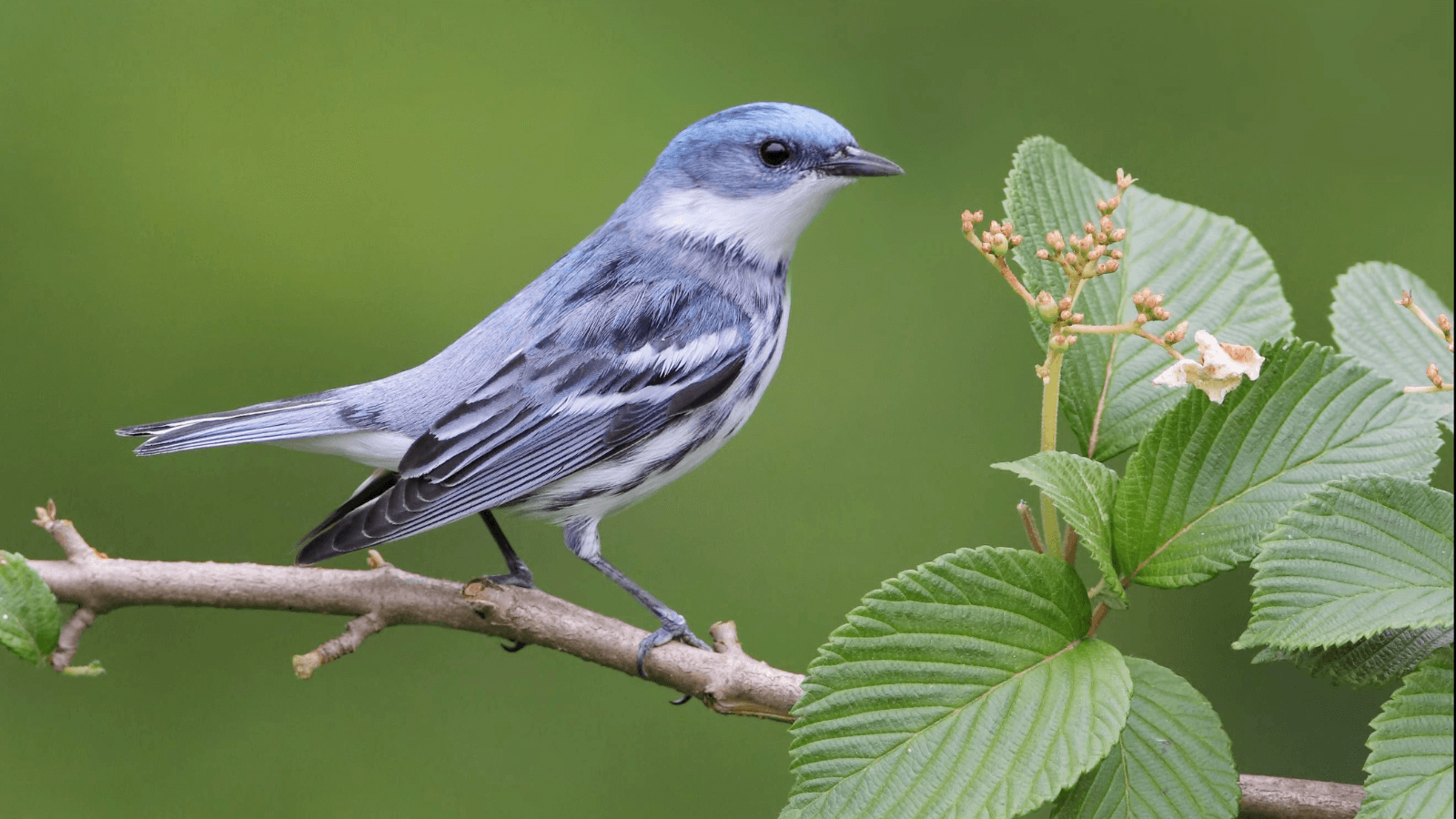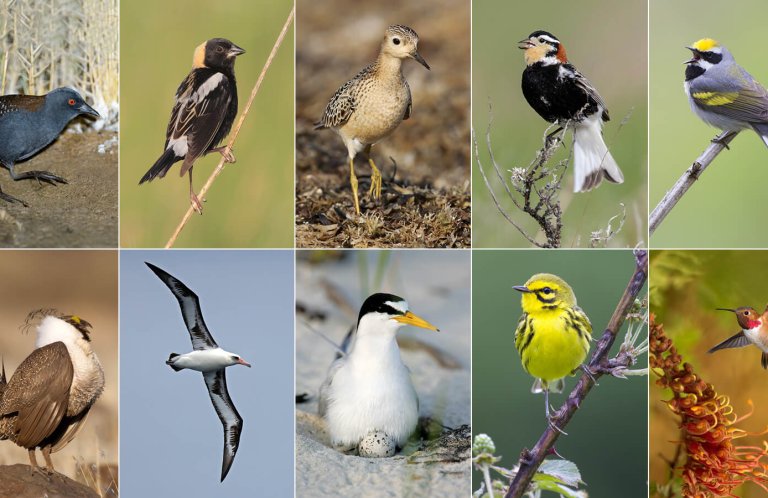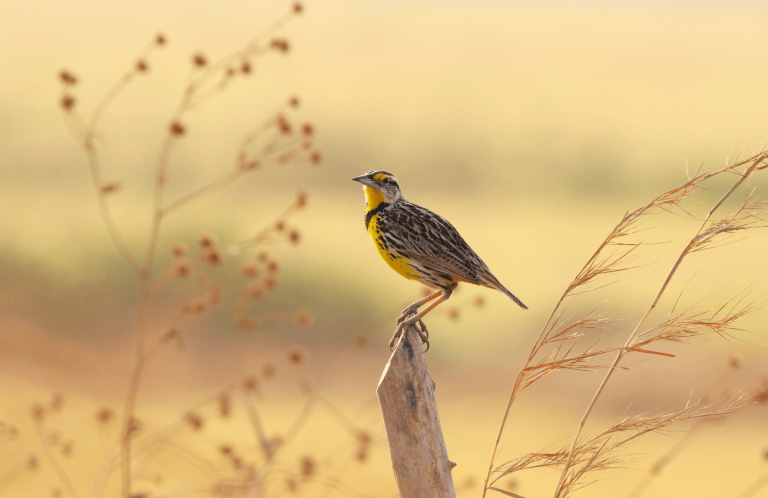Tips to Help “Tipping Point” Species: Collaborate and Think on a Landscape Scale

This year's State of the Birds report presents a dire warning about the future of many U.S. avian species if current trends continue. While waterfowl are on the rise thanks to wetlands-focused conservation efforts, nearly every other group of birds is declining. The report identifies 90 species that have lost at least half of their breeding population in the last 50 years, but are not protected as Threatened or Endangered species under the Endangered Species Act. Of these species, 70 are considered “Tipping Point” species, currently on track to lose the other half of their population in the next 50 years.
But there is hope. Collaborative conservation efforts have recently slowed and even halted population declines in the other 20 species. Two of these, the Cerulean Warbler and the Wood Thrush, are even increasing in population in some parts of their range. This is thanks, in large part, to the Appalachian Mountains Joint Venture (AMJV) and its partners. This regional partnership headed by American Bird Conservancy (ABC) staff is made up of more than 55 government agencies, nonprofits, and universities.
ABC's Writer/Editor Rachel Fritts sat down with AMJV Coordinator Todd Fearer, a scientific advisor on the report, to talk about what it has taken to set these species on a path toward recovery, plans to build on success so far, and how the model can be replicated for species across the United States.
RF: You lead the AMJV — can you explain what that is and how it operates?
TF: The AMJV was established in 2008 as one of 21 U.S. Migratory Bird Joint Ventures (JVs). We are administered by ABC through a cooperative agreement with the U.S. Fish and Wildlife Service.
The essence of the AMJV is its partnerships, with the JV providing a nexus that enables collaborative conservation across the landscape. Our success really comes from what AMJV core staff help partner organizations and agencies achieve on the ground. A lot of the JV's bird conservation work involves collaborating to enhance and protect forest habitat for birds in line with established national bird conservation plans.
AMJV staff provide regional planning, project coordination and development, and networking resources to connect the conservation community. AMJV partners — including our management board, technical committee, and regional partnerships — provide financial, technical, and local expertise to deliver conservation projects on the ground.
RF: The AMJV has put a lot of effort into the conservation of two bird species in particular — the Cerulean Warbler and the Wood Thrush. Why focus on these two species?
TF: We have over one-third of the global Wood Thrush population within the AMJV, and almost 75 percent of the Cerulean Warbler population, so we obviously have a major conservation responsibility for them. Both of these species have declined significantly in the past several decades within the Appalachian Region. Since the mid 1960s, we've lost approximately 75 percent of the Cerulean population and 60 percent of Wood Thrush. The health of these two species also happens to be a good representation of forest health and resilience in general, so we know that conservation actions for these species benefit the entire system.
RF: What has the AMJV done to address threats to these species?
TF: Our work is informed by the best available science about the breeding habits of both species, as well as sustainable forest management guidelines. In 2020 we enhanced 8,753 acres of habitat on private lands in West Virginia, Pennsylvania, and Maryland and reforested 677 acres of legacy surface mine land in Ohio and Kentucky.
Currently, much of our work is occurring in six Focal Landscapes, equivalent to ABC's Birdscapes, across the AMJV geography, which are featured in the State of the Birds report. Through these Focal Landscapes, we're strategically targeting our capacity and resources to high-priority regions established by the AMJV partners. Amanda Duren, AMJV Director of Conservation Partnerships, leads this work. This approach maximizes conservation impacts for our priority species. Since we launched the effort in 2017, we've worked with partners to receive 14 grant-funded projects, resulting in a $4 million investment in forest management, with at least one project awarded in each Focal Landscape.
Finally, we're trying to expand our work to have a full annual life cycle-driven approach and address conservation issues across all parts of that cycle. These birds are also migratory, and conservation will only be successful if we're working across that full migratory pathway: breeding habitat, migratory stopover habitat, and wintering habitat. Becky Keller, our AMJV Science Coordinator, leads our AMJV Full Annual Cycle Team, and I recently revived the Cerulean Warbler Technical Group to help coordinate conservation actions across the Cerulean's range, especially their nonbreeding grounds.
RF: Now Cerulean Warbler and Wood Thrush populations are actually increasing in some of your work areas. What contributed to your success in these places?
TF: There are a lot of things likely contributing to these increases, and in all cases this success is really a function of the collaborative efforts of AMJV partners. The areas highlighted in the State of the Birds report with some of the biggest increases are areas that our partners have been working in for some time, even before they were officially deemed Focal Landscapes in 2017. In fact, many of our Focal Landscapes were established not only because they're important areas for our priority species, but also to build on and strengthen existing partner networks and expertise so we weren't starting from scratch.
The AMJV treats each landscape as a holistic system, with participating partners identifying the objectives for each landscape, including priorities that are not bird-centric. We also worked very closely with the National Fish and Wildlife Foundation (NFWF) when they established their Central Appalachia Habitat Stewardship Program in 2017. This program covers the northern half of our JV and provides funding for forest management projects. All that said, our work is far from done. There are many factors that affect those trends, and anyone who is involved with bird conservation knows that they can change direction quickly.
RF: What advice do you have for others hoping to replicate your success with Tipping Point species across the U.S.?
TF: First, embrace an approach that seeks to engage all relevant partners and brings them to the table from the start. I think this has been key for our Focal Landscapes. We worked with our partners to develop an agreed-upon set of overarching criteria for establishing all of our Focal Landscapes, then allowed partners to determine their boundaries, rather than us pointing to a place on the map and saying “Put one here.”
Second, take a holistic approach to conservation. The State of the Birds report provides some great examples of how bird conservation can contribute to broader conservation priorities, from carbon sequestration to ground water recharge. Understanding and embracing those broader benefits can open the door to novel partnerships as well as get more buy-in from established partners, such as state agencies, because the work is addressing many of their priorities in addition to birds.
RF: Finally, what are you hoping that people take away from the new State of the Birds report?
TF: We can do this! It's easy to look at the trends of some of the species, especially the Tipping Point species, and become disheartened. But the point of this report is to highlight the successes that show we can turn things around and the opportunities we have now to make it happen.
Many in the bird conservation community talk about the uniqueness of this moment in time — about how we're at a threshold of some really big opportunities and changes. At no other point in recent history has conservation received so much attention with so many resources made available for action on the ground, with even more, hopefully, on the horizon. And if there was ever a time we needed to make this a reality, it's now. The essay in the report by Dr. Drew Lanham really brings this home — he points out that our work isn't just about bird conservation, it's for all of us.
###
American Bird Conservancy (ABC) takes bold action to conserve wild birds and their habitats throughout the Americas. Inspired by the wonder of birds, we achieve lasting results for the bird species most in need while also benefiting human communities, biodiversity, and the planet's fragile climate. Our every action is underpinned by science, strengthened by partnerships, and rooted in the belief that diverse perspectives yield stronger results. Founded as a nonprofit organization in 1994, ABC remains committed to safeguarding birds for generations to come. Join us! Together, we can do more to ensure birds thrive.
Media Contact
Jordan Rutter
Director of Communications
media@abcbirds.org


















































